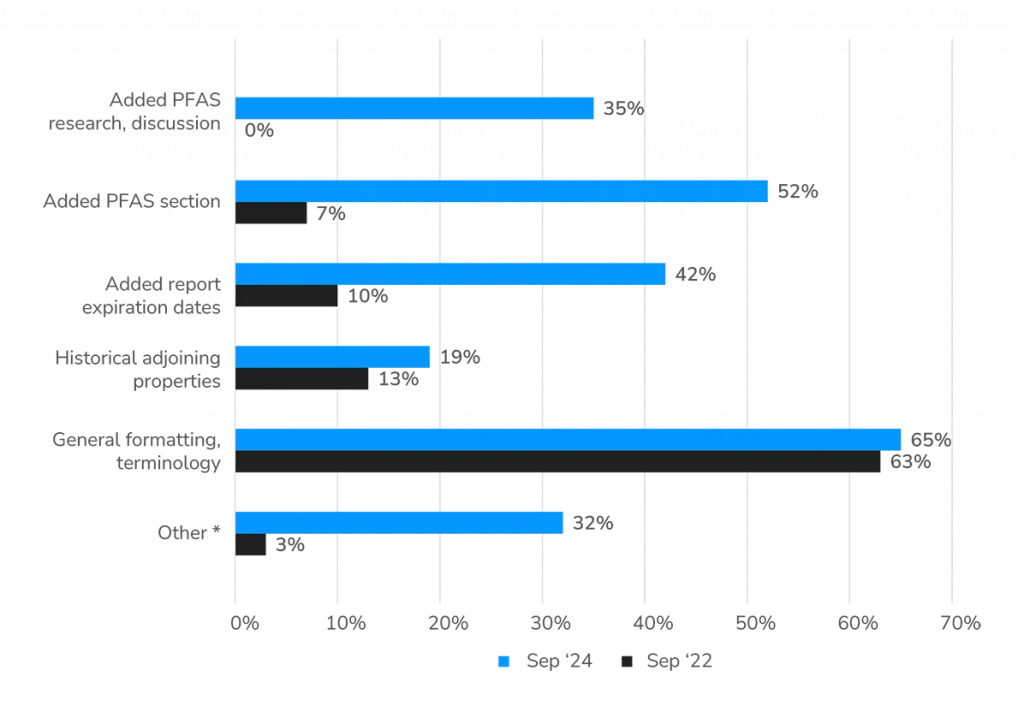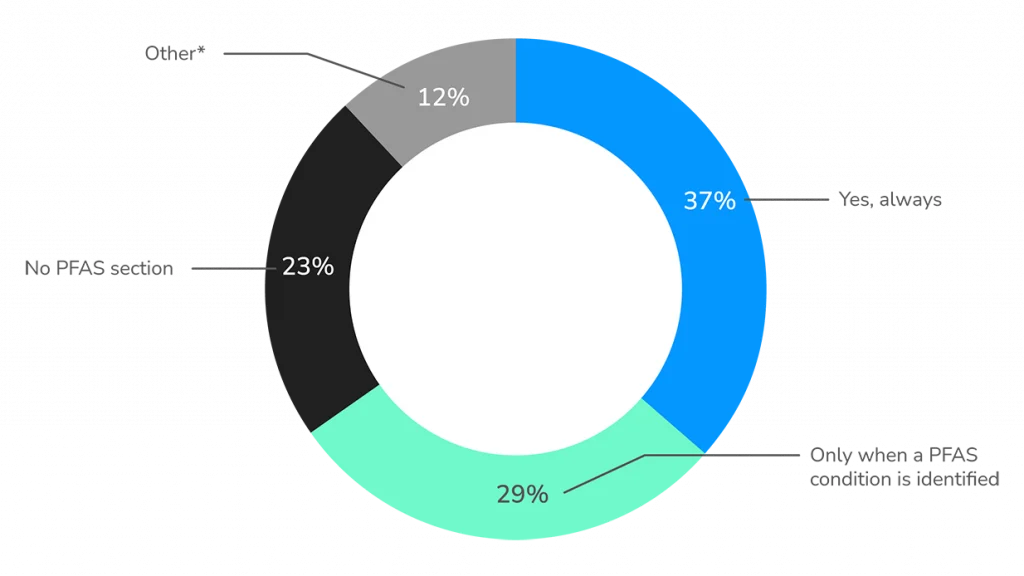This three-part series explores how the environmental consulting industry is adapting its practices following the ASTM E1527-21 updates and the recent classification of PFAS as a hazardous substance under CERCLA by the US EPA. Each part examines the LightBox 2024 Benchmark survey results highlighting specific operational shifts that firms are making to meet new industry standards and support clients in managing PFAS risk.
In part one, we examine the findings from LightBox’s 2024 Benchmark Survey and explore how the environmental consulting industry is adapting to key changes, specifically around ASTM E1527-21 standards and the recognition of PFAS as a hazardous substance under CERCLA. We compared the findings from the 2024 benchmark survey against earlier efforts in 2022 to gauge how the industry’s evolution to assess PFAS risk has progressed.
A Shifting Landscape for Environmental Due Diligence
The latest benchmark survey results show that the environmental consulting sector has seen a marked evolution in response to the ASTM E1527-21 (ASTM-21) standard and growing awareness about PFAS risk. When asked about changes implemented after ASTM finalized the E1527-21 revisions, the most common response (71% of respondents) was a change to report format and terminology (compared to only 32% in the 2022 survey). Among those who changed their ESA report template, 52% added a PFAS section, and 35% added PFAS research and discussion.
If you Changed your ESA Report Template, What Changes Did You Make?

More than One-Third of Phase I ESAs Contain PFAS Section
One of the most notable findings of LightBox’s 2024 Benchmark Survey effort is that 37% of Phase I ESA reports today contain a specific section on PFAS risk. This is a significant jump compared to only 7% in 2022. Another 29% of respondents include a PFAS section only when a PFAS condition is identified.
Georgie Nugent, Environmental Division Director at McFarland Johnson, noted, “On a state level, prior to 2022, we saw certain PFAS compounds being listed. New York, for example, became the first state in the nation to regulate two PFAS compounds back in early 2016. The new ASTM standards document this under Act 610, identifying PFAS as emerging contaminants.” As more states address PFAS, it is reasonable to assume that more Phase I ESA reports will include dedicated sections on PFAS.
Do your firm’s Phase I ESA reports typically include a section on PFAS risk?

Navigating Client Concerns about PFAS Risk
More consultants are including a discussion of PFAS risk in their Phase I ESA reports, particularly on projects involving property acquisitions. As one respondent noted, “Clients involved in acquisitions are much more concerned with PFAS risk than lenders involved in refinancing.” Despite growing awareness about the risks of PFAS, respondents report that many clients are still unsure about how to manage PFAS risk, underscoring the importance of working with EPs with solid technical knowledge of this evolving field. Another respondent remarked, “Clients are still concerned about identifying a PFAS risk because they don’t know what to do about it if it is identified,” a sentiment that reflects the uncertainty about managing PFAS risk at this early stage of awareness.
Looking Ahead
As the environmental consulting industry adapts to ASTM-21 and evolving PFAS regulations, the LightBox 2024 Benchmark Survey reveals a sector in transition, shaped by new standards and client demands. For further insights, tune in to the Environmental Due Diligence podcast where experts discuss trends in the survey data and whether the industry has reached a consensus on how to conduct and interpret the results of PFAS due diligence for CRE transactions.
In the next installment of this three-part blog series, we will delve into Phase I ESA reports and how firms are reporting on PFAS to manage risk, positioning themselves for continued changes in the regulatory environment.

